Most wasps live in a colony wherein there is a queen and tons of workers. These workers will not only protect their queen but also their nest.
The presence of wasp nests can cause trouble since these wasps can be aggressive and will sting humans. Meanwhile, queen wasps are responsible for producing workers.
Does killing the queen wasp get rid of the nest? It depends on when you will kill the queen. If the nest is new and there will be no queen, then you can get rid of their nest. Otherwise, the workers inside the nest are also very likely to attack you. The new queen will also lay eggs, and the colony will continue to grow.
Treating a wasp nest can be very challenging. Aside from the fact that workers will defend their nests, you should also deal with their queen. So before any action, you should understand how queen wasps behave.
Fortunately, this article explains everything about them. You will also learn how to control them safely.
Table of Contents
Queen Wasp Identification
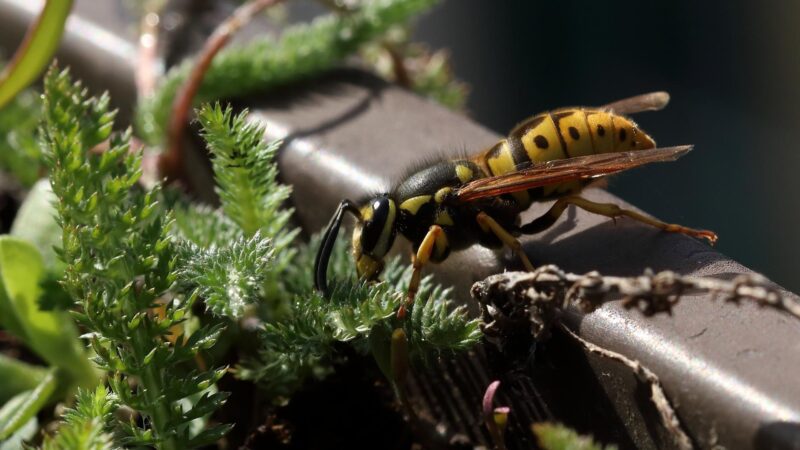
What Does a Queen Wasp Look Like?
The queen wasp looks like the wasp workers, but she is the biggest in the colony. Wasps can be categorized into two groups – social and solitary. The social wasps are the paper wasps, yellowjackets, and hornets.
Each of them has a distinct physical appearance, but all of them live in colonies with their queen.
Paper wasps are 3/4-1 inch (19.0-25.4 mm.) long and have a reddish-orange to dark brown body. Yellowjackets are about 1/2-3/4 inch (12.7-19.0 mm.) long and are usually black with bright yellow markings.
Hornets are about 1 inch long, with a black body that has colored markings such as white or light yellow.
Where Does a Queen Wasp Live?
A queen wasp lives in its nest and is being served and heavily protected by her workers. A wasp nest looks like a paper nest and is made from a mixture of saliva and paste-like pulp from chewed wood.
Nests of hornets have an outer shell and an opening at the bottom, while a paper wasp nest is exposed.
Paper wasps and hornets build their nest attached to a tree branch, weathered wood, or on the undersides of building eaves. On the other hand, yellowjackets build their nests underground.
The queen wasp initially builds the nest. Once established, she will lay tons of eggs, and workers will continue building the nest.
What Does a Queen Wasp Eat?
Wasp queens feed on the nectar of sweet plants and flowers. But while they are searching for food, these busy queens will also look for a safe and comfortable place where they can build a nest. A wasp queen will spend all her time finding and collecting materials for their nest and will have less time feeding herself.
A queen wasp lays 200-300 eggs per day. Once these eggs hatch, she will be very busy hunting for insects to feed her larvae and will no longer pollinate.
But while the larvae are eating the insects, the chitin (a type of carbohydrate) from the exoskeletons of these insects will turn into sugar, which the queen will eat.
How Long Do Queen Wasps Live?
The average lifespan of queen wasps is 10-12 months, while worker wasps may only live for 12-22 days. Most fertilized queens survive the winter after hibernating.
Once they emerge from overwintering, these queens will build a new nest. After establishing a new colony, the queen wasp will die naturally.
Do Queen Wasps Sting?
Queen wasps do sting, but they rarely used their stinger on humans. Instead, they sting their prey, such as small insects and spiders, and feed them to their young.
Queen wasps sting humans in self-defense or when they feel threatened. Male wasps don’t have stingers, which means that only females can sting.
What Happens to a Wasp Nest When the Queen Is Killed?
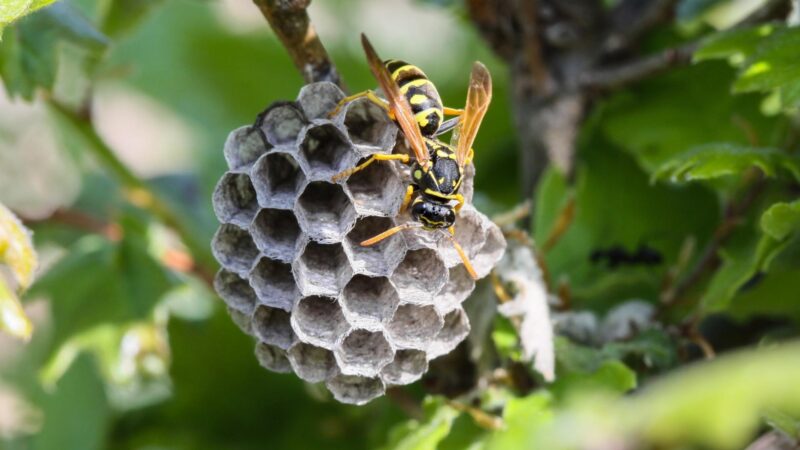
A wasp nest will remain and continue once the queen wasp is killed. Regardless of how the queen died or was killed, a new queen will soon emerge from the wasp colony.
In fact, a potential successor is already in line even while a sitting queen is alive and healthy. However, having a new wasp queen is not easy.
Shortly after a queen wasp is already gone for whatever reason, one worker will become extremely aggressive and will attack other workers. This is to show them that she deserved to be the next queen.
The battle to be the new queen is violent, but there are only a few challengers. In most cases, there is no challenger at all.
Will Wasps Leave if the Nest Is Destroyed?
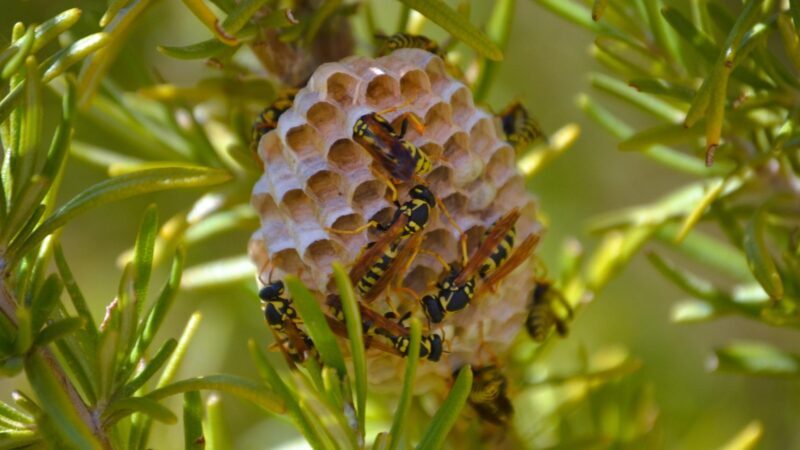
Wasps will leave if their nest is already destroyed. But if the nest is not ruined and can still be repaired, they may come back to fix it. Otherwise, they will move to another place to build a new one.
A wasp colony usually lasts for only a year. Worker wasps die in the winter, and only the queen survives.
What Do You Do if You Find a Queen Wasp?
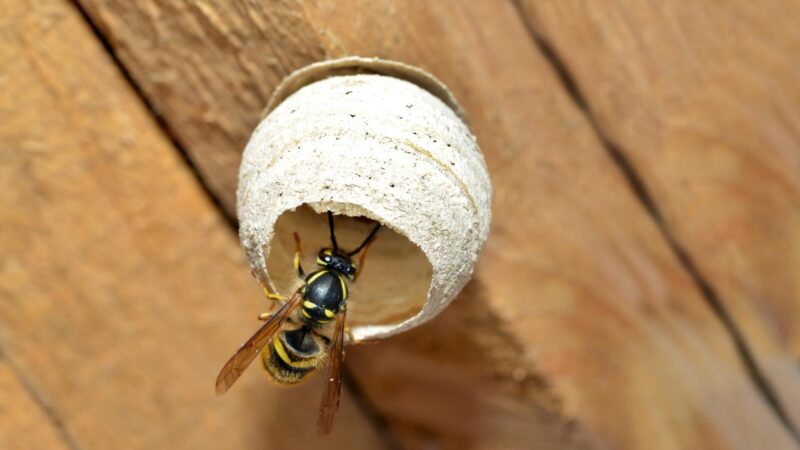
Normally, you would want to kill a queen wasp to prevent a wasp infestation. But if their colony has already been established, wasps can easily replace her with a new queen.
Therefore, getting rid of queen wasps should be done in the early spring, when they emerged from hibernation and will start to build a new colony.
Note also that wasps are beneficial to the environment since they prey on insect pests, including crickets, flies, and damaging caterpillars.
So, if you spot a queen wasp inside your house and she is not bothering you, just open the window and shoo her away. Seal all possible points of entry so she won’t be able to return.
Related: Wasp Nests | How Long Does It Last and How to Get Rid of Them?
Is It Dangerous to Remove Wasps?
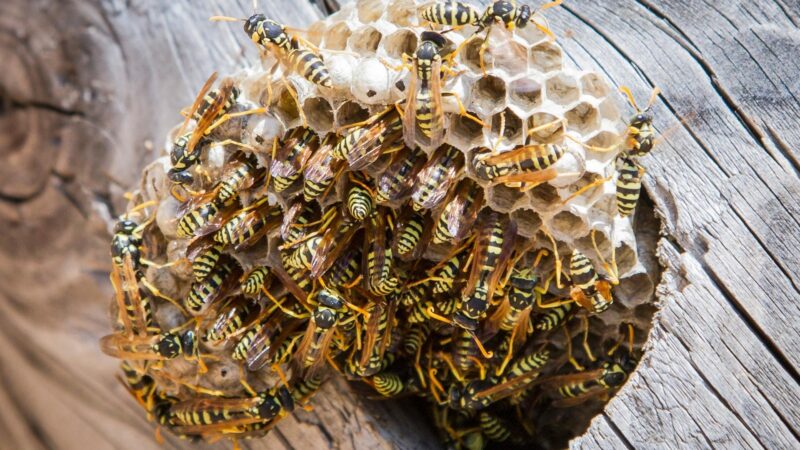
It is dangerous to remove wasps, especially if they are in their nest. They can be very aggressive and will not hesitate to fight back.
During peak season, a paper wasp nest can have about 100 individuals, and a hornet colony may have 200-400 adults. A yellowjacket nest may consist of as many as 20,000 workers.
How to Get Rid of Wasps Naturally?
Aside from posing a health risk, using insecticides to drive wasps away has a negative impact on the environment. Once these wasps feel threatened, they will disperse and will attack people to protect their nests.
Therefore, the best way to get rid of wasps is to do it in natural ways. Here are some things you can do:
- If the nest is still young and there are only a few wasps inside, you can spray soapy water in it. But don’t block the entrance.
- Alternatively, you can use some essential oils such as citronella, clove, lavender, lemongrass, and peppermint.
- If you are not sure what type of wasps you are dealing with, hang wasp traps such as RESCUE! WHY Trap for Wasps, Hornets, & Yellowjackets. For your safety, hang them about 20 feet away from the nest.
- Hang fake wasp nests such as AIRCROW Wasp Out Fake Hornet’s Nest. Wasps are very territorial and may leave if another nest is nearby.
- Since wasps are short-lived, you may also ignore them and wait for them to be gone.
Note: Whatever strategy you want to use to get rid of wasps, always wear proper PPE (Personal protective equipment). Unlike bees, wasps don’t leave their stingers on the skin.
Therefore, they can sting multiple times. This is also why you should not allow young children to go near them. Most wasp stings are extremely painful.
Frequently Asked Questions
Does a Queen Wasp Leave the Nest?
A queen wasp rarely leaves her nest, except when it is time for her to hibernate. During their hibernation period, which happens in the winter, fertilized queens leave their nest.
At this point, workers and virgin queens will remain in the nest, and most of them will not survive. If a queen wasp is weak, she may also die.
Do Wasps Use the Same Nest?
Wasps don’t use the same nest again even if it is not destroyed. Once the queen emerges from hibernation, she will not reuse the old nest and will instead build a new one.
While their original nest is empty, it will break down into small pieces during heavy rains. This scenario is common, especially in hornet nests.
Are Queen Wasps Aggressive?
Generally speaking, queen wasps and their workers can be aggressive towards humans in defense of their nests. Paper wasps are the least aggressive, as compared to hornets and yellowjackets.
Hornets can sting through clothing and protective gear. Yellowjackets are most aggressive in late summer and fall.
Do Wasps Hibernate in Houses?
Wasps do hibernate in houses, especially in the attic and basement. You may also see some of them crawling on the floor or near the window.
Wasps are attracted to light and may accidentally enter your house through chimneys or a wall void. They may also be in the holes in the ground and cracks and crevices.
As mentioned earlier, only the fertilized queens hibernate. The rest of the colony will remain in the nest and will eventually die. If the winter is not too cold for them, these surviving queens are likely to fly around.
Although they may still sting humans, these swarmers are less aggressive and are very unlikely to attack.
Summary
The chance of seeing a queen wasp is very slim unless she is alone or starting to build a nest. Aside from being insect pest predators, these queen wasps are also great pollinators.
With that, they play a vital role in the ecosystem and should not be killed. So, don’t try to bother their nest and avoid them as much as possible.
List of Sources
Paper Wasp Swarming Around Structures
Paper Wasps, Yellowjackets and Solitary Wasps
Essential Oils and Their Compositions as Spatial Repellents for Pestiferous Social Wasps